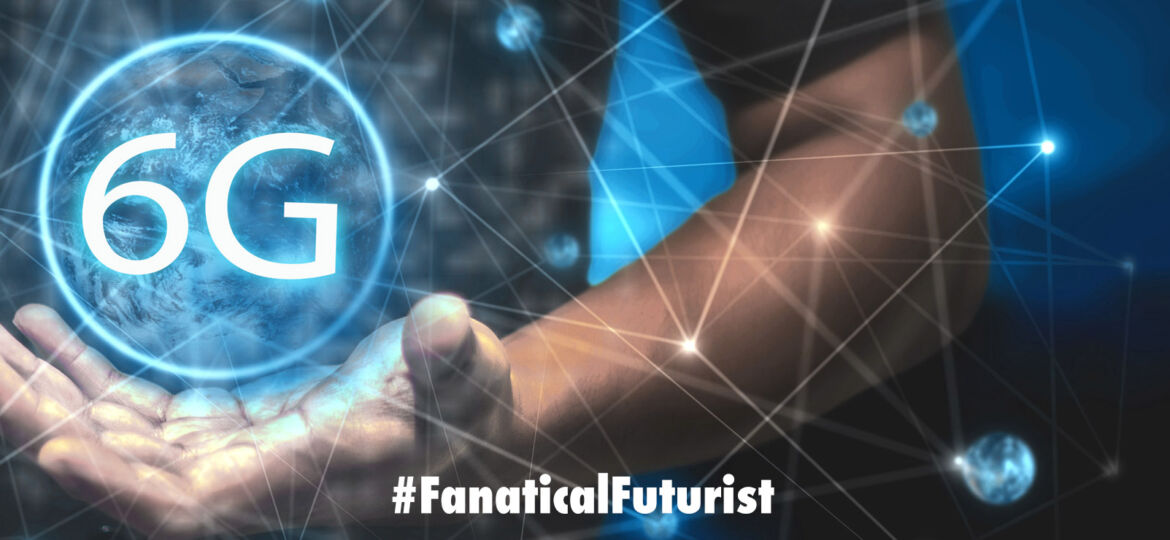
WHY THIS MATTERS IN BRIEF
As mobile communications become more important to businesses and governments the US wants to encourage innovation.
Commercial 5G networks are barely operational in the US right now, but that hasn’t stopped engineers from thinking ahead to 6G, which is already on the drawing board with China eyeing the first 6G deployments in 2030, and the US government wants to help companies experiment over the next decade, so, after a unanimous vote, the FCC is opening up the “Terahertz Wave” spectrum for experimental purposes, creating legal ways for companies to test and sell post-5G wireless equipment that can download and upload content at Terabit speeds.
The FCC’s Spectrum Horizons First Report and Order deals specifically with the 95 gigahertz (GHz) to 3 terahertz (THz) range — a collection of frequencies that aren’t currently being used in consumer devices, and have wide bandwidth with vast potential for data streaming. In addition to issuing 10 year licenses to experiment in that range, the FCC will offer a full 21.2GHz of spectrum for testing of unlicensed devices.
Collectively, that 95GHz to 3THz spectrum extends a little beyond the 300GHz to 3THz range defined as “tremendously high frequency.” At the lower end of the FCC’s range, 95GHz to 300GHz signals are technically still millimeter waves, as they’re at or over 1 millimeter in wavelength. But 300GHz to 3THz signals are are at or under 1 millimeter in wavelength, and for that reason called “sub-millimeter waves.”
Even by comparison with the 24GHz to 28GHz millimeter wave spectrum that’s currently being auctioned off by the FCC, the terahertz spectrum is considered bleeding-edge enough to be nearly science fiction. FCC Commissioner Michael O’Rielly said the nascence of terahertz technology made the vote felt “like designating zoning laws for the moon,” and noted his hesitance to “create a class of incumbents, who then have to be moved or protected in the future when this spectrum becomes of greater interest for 6G, 7G, or whatever the next-next-generation wonder technology may be.”
But other commissioners, including Jessica Rosenworcel, were largely optimistic on the plans for the spectrum. “There is something undeniably cool about putting these stratospheric frequencies to use and converting their propagation challenges into opportunity,” she said. “This rulemaking gets that effort underway, so it has my support.”
The “propagation challenges” she references are non-trivial. Like millimeter waves, sub-millimeter waves face issues such as limited transmitting distances and an inability to penetrate buildings. However, NYU Wireless Professor Ted Rappaport (via FierceWireless) said that the higher-frequency signals will perform better with directional antennas, and claimed that with the new spectrum, “you can start having data rates that approach the bandwidth needed to provide wireless cognition, where the computations of the human brain at those data rates could actually be sent on the fly over wireless. As such, you could have drones or robotics receive in real time the kind of perception and cognition that the human brain could do.” Awesome!
Actual applications of the technology are yet to be demonstrated, and in most cases even imagined. But the dreaming of what’s to come after 5G has already begun. Keysight made a sizable donation to NYU last October to spur 6G development. Later this month, scientists and engineers will gather in Oulu, Finland for a 6G Wireless Summit, in hopes of further defining what the standard could look like — when it comes together in or around the year 2030. Thanks to the FCC’s vote, it looks like the US is ready to welcome the next generation of wireless experiments with open arms.

















This is very engaging. I will want to receive more information on 6G
Thanks and you’re welcome – here’s a codex with details on 6G and 7G you can read to find out more: https://www.311institute.com/the-future-of-the-connected-world/
[…] Commission (FCC) approved the entire 6 GHz band for unlicensed applications such as Wi-Fi back in 2020, meaning that global coordination on use of the magic frequencies seems somewhat […]